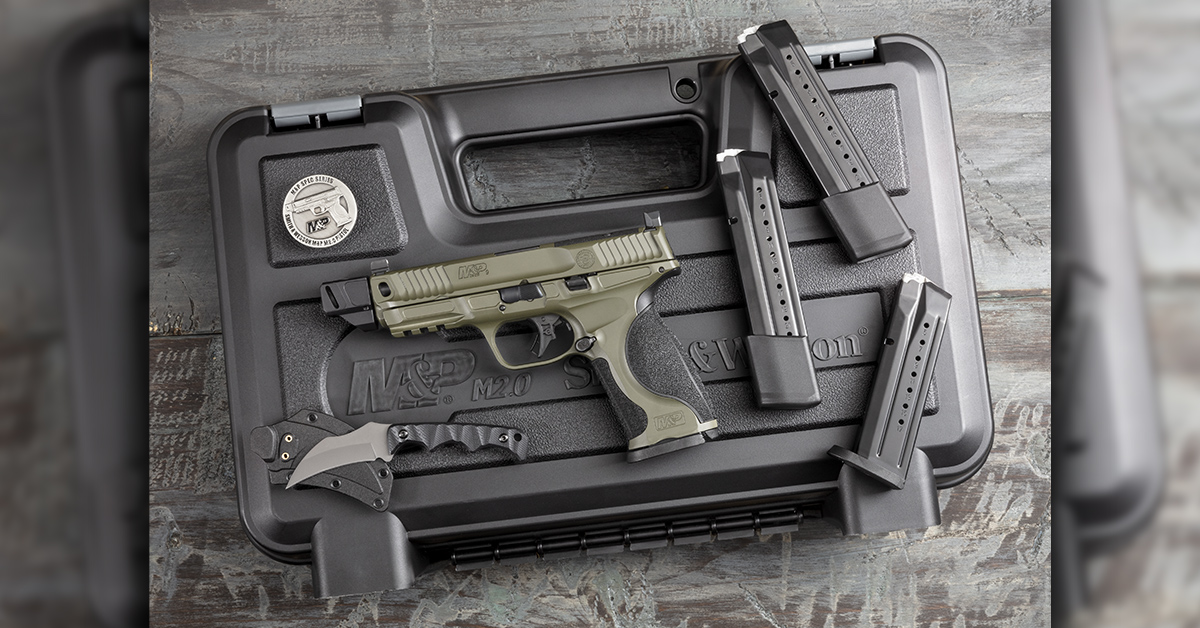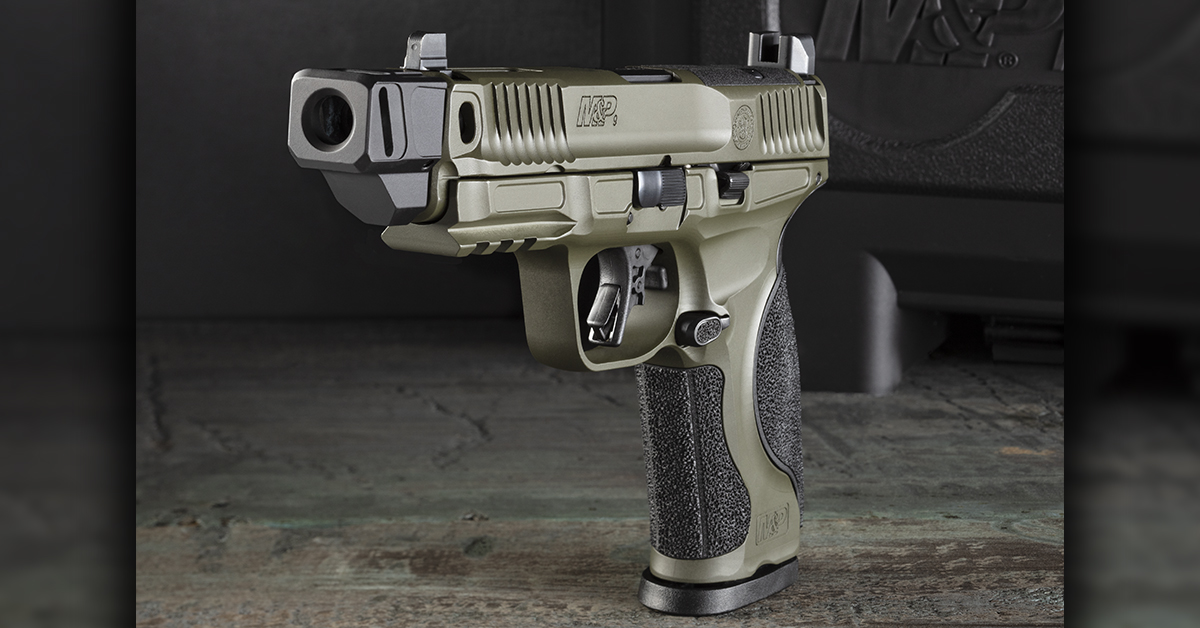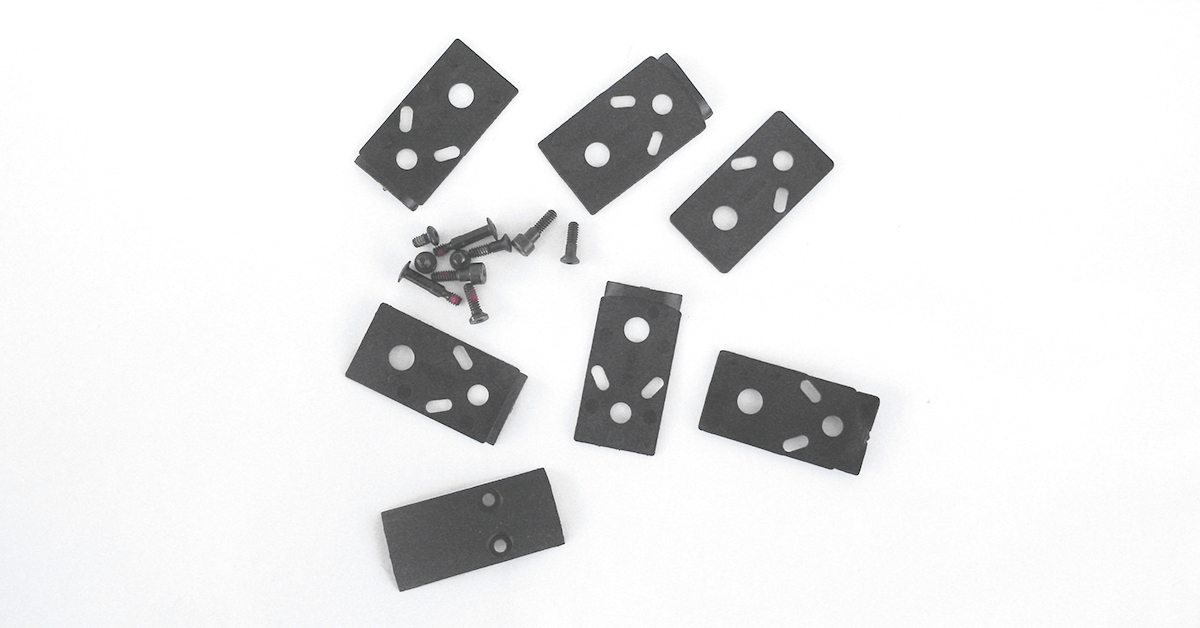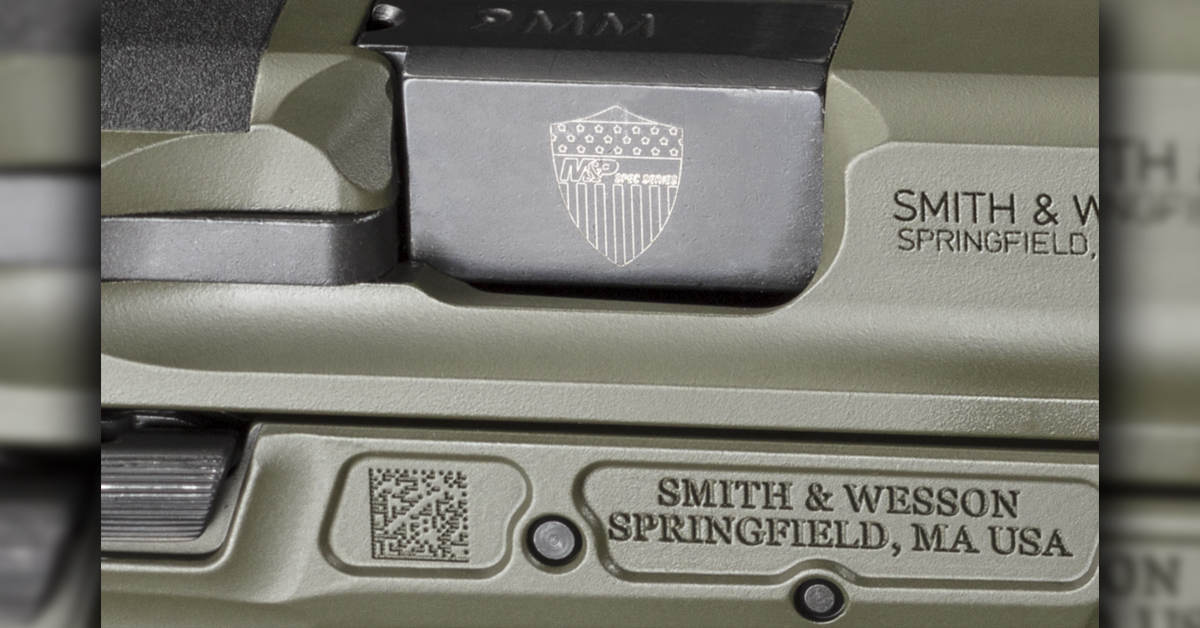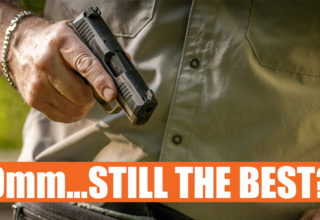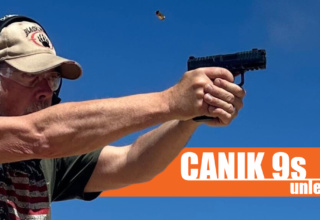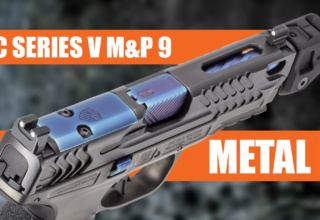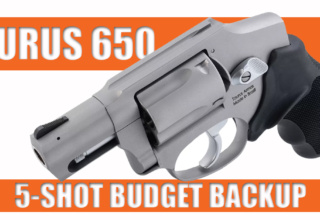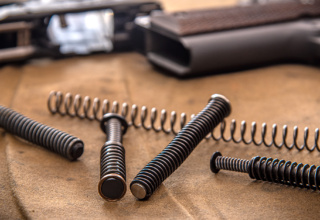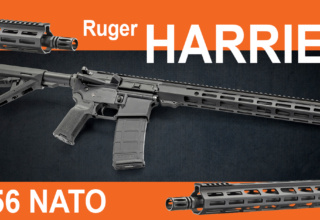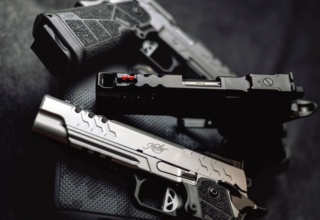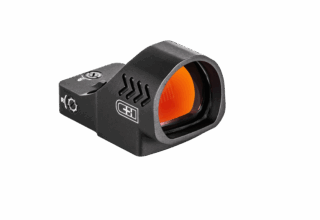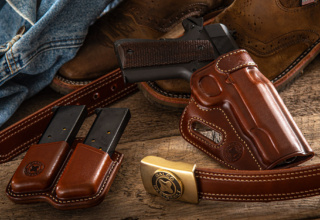Added heft, a few tweaks, plus a touch of S&W’s Performance Center magic earns the M&P9 Metal M2.0 Spec high praise from this author
by Bob Campbell
I was very pleased to obtain one of the first available Smith & Wesson Performance Center M&P9 Metal M2.0 Spec pistols last year. That’s a mouthful, but there are so many Smith & Wesson models that we must be exact in our description. The Performance Center specializes in meaningful upgrades that bring standard handguns up a notch or two — sometimes several tiers — in performance.
There is nothing wrong with the affordable and reliable Military & Police 9mm. But for those shooters wanting to be all they can be in competition or personal defense shooting, the Performance Center offers custom grade improvements. Improvement centers upon the sights, barrel, and action, and often enough the piece is given a distinctive appearance. Among the more interesting Performance Center products are the Spec series. These guns are attractively packaged and offer real improvements. The latest is a Smith & Wesson M&P9 metal frame adaption. The news of the aluminum frame 9mm was exciting enough, now we have a Performance Center variant.
The pistol is delivered in a briefcase-size box with the pistol, grip inserts, challenge coin, karambit-style knife, and a total of four magazines. The handgun features an olive drab green Cerakote finish. The grip treatment is more like the 10mm M&P than the 9mm, with a balance of adhesion and abrasion favoring abrasion. Don’t worry about corrosion. The slide is stainless steel under Cerakote. The pistol features lightening cuts in the slide to lower weight.
The most prominent feature of the pistol is a compensator. With the pleasant weight and the compensator, you would expect a soft shooting 9mm, and you would be correct. The handgun features suppressor- or red dot co-witness-height sights. These sights feature three-dot tritium inserts. The pistol is equipped with the excellent C.O.R.E. Competition Optics Ready Equipment optics plate system.
The barrel is the heart of a competition gun. This 4.8-inch barrel features a 1:10-inch rifling twist. A Faxon compensator is built onto the barrel. The four supplied magazines are a nice touch. Two are 23-round types and two are 17-round capacity. These M&P magazines are the same as those supplied with the popular S&W FPC carbine. The magazines are well made and reliable metal feed devices.
The why and how of a gun doesn’t matter as much as how much we enjoy the piece and how well we shoot it. But there is a lot of why in this pistol.
The metal frame pistol adds weight to the polymer-frame handgun, and to some, the natural point-of-aim seems improved. Many polymer-framed handguns are slide-heavy. Getting used to the metal frame gun is, for long-time shooters, actually getting used to properly balanced metal frame guns all over again.
Yet it really isn’t a heavy gun. In fact, the M&P9 Metal isn’t much heavier than a 1911 Commander and is lighter than a SIG P226, as examples. A lightweight carry gun is a good thing for constant carry — if it isn’t too light.
A couple of decades ago, the FBI conducted a study determining that handguns of 35 ounces or more become burdensome when carried for long periods. I agree. Lighter guns may have the same intrinsic accuracy as heavy guns, but practical accuracy is increased with stabilizing weight. A heavier gun is more comfortable to carry, invites practice, and offers greater control. To a point, heavier guns compliment a trained shooter. Some of the heavy 40-ounce-plus handguns may strain anterior muscles, so that may be too much weight. A metal-frame pistol may seem only slightly easier to shoot well, but when you time splits between shots and time to properly address multiple targets, the difference is appraisable.
Why the Military & Police over a GLOCK? Some of us may think that the M&P 9mm is superior based on ergonomics, trigger action, and sights. I would be hard-pressed to put up an argument. After banking a few hundred rounds in each pistol, you may find the M&P offers superior practical accuracy. Add the metal frame option upgrade to a SPEC series and you really have something.
The 18-degree grip angle feels better in my hand than any GLOCK. Holster choice may concern you. All Military & Police holsters fit the metal frame gun. If you deploy the compensator-equipped pistol, then an open-bottom holster cut for the M&P 9mm will work fine. Most Kydex holsters will not. I used a Galco belt slide in most of the testing and found a Galco StoNGo worked well for inside-the-waistband carry. Be aware of the compensator and ask questions when choosing a holster.
The pistol will accept six different optic cuts, with the CORE system making it more versatile than most. I like the three-dot tritium sight inserts. You don’t need tritium on a competition gun, so Smith & Wesson obviously is thinking personal defense. The pistol features the obligatory accessory rail for mounting lights or lasers. The controls include a slide lock and magazine release. Each is positive in operation. Takedown is the same as all M&P handguns using a simple takedown lever. Unload the pistol, remove the magazine, lock the slide to the rear, rotate the takedown lever, and run the slide off the frame. You do not have to press the trigger to disassemble the Military & Police handgun. You do have to reach into the ejection port with a digit or tool and trip the sear. Pressing the trigger is fine if done safely with an unloaded gun. This elementary logic would have saved quite a few self-inflicted and negligent discharges.
The trigger action is a huge part of a handgun’s performance. The M&P9 Spec trigger is superior to practically any striker-fired pistol I have tested. The flat face of the trigger and a sear specially developed for the Spec pistol add up to a smooth trigger action. Take-up is modest and the trigger breaks sharply at 4.0 pounds. Reset is as important as trigger break in fast shooting. The Smith & Wesson flat face trigger breaks clean and sharp with excellent reset. It is at least comparable to any other factory-grade striker-fired trigger and superior to most. Note the pistol features an overtravel stop, which is a nice touch on any handgun.
The compensator deserves some thought and study. It is simple enough to order a Faxon barrel and compensator or add the compensator to a threaded barrel. There is an increase in popularity among factory compensated guns. The Faxon EXOS type features an angled port, single chamber design. The goal is to improve shot-to-shot accuracy and the device does so by limiting muzzle flip. The difference is best discovered when you are firing as quickly as possible and hitting. Only hits count. You cannot miss fast enough to catch up! The Faxon compensator is an aid in enhancing speed for a trained shooter. If you don’t like the compensator, you may remove the device easily enough although heating of the thread adhesive may be needed. A muzzle cover is provided in case you make that decision.
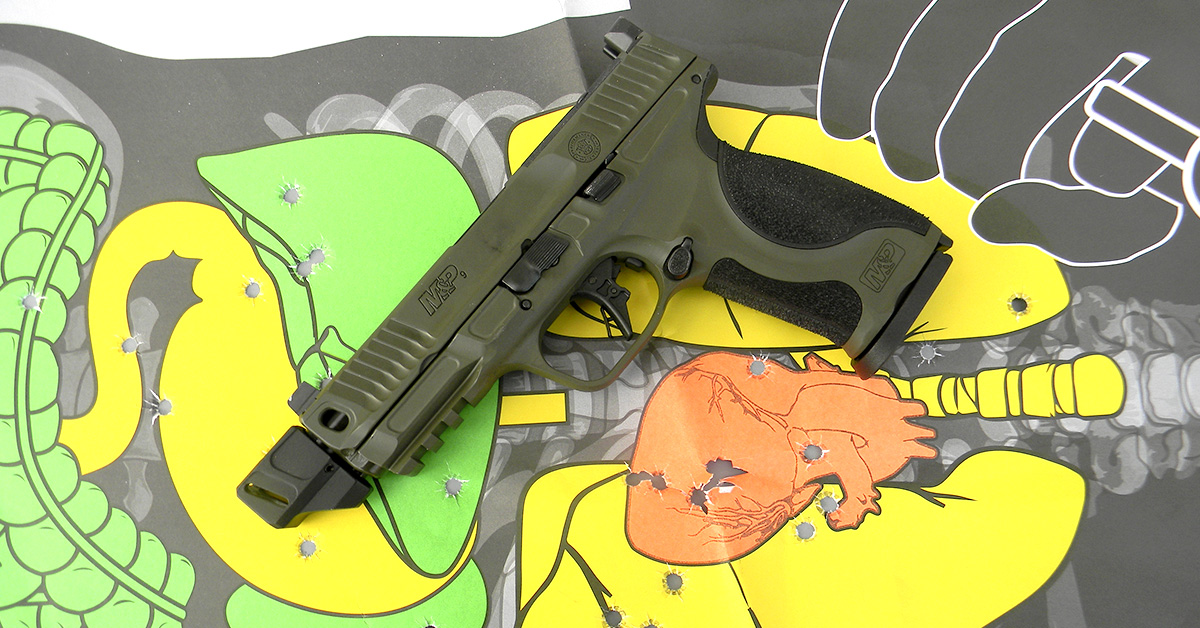
After examining the pistol and engaging in profitable dry fire sessions, I moved to live fire. If you are to engage in amateur competition at the local range and get the most out of this handgun, practice is essential. I have engaged in several range sessions and went a bit over budget in testing this pistol, going past testing and into acclimation to the pistol as a first-line defense gun.
I began with a lubricated pistol and the magazines loaded with Fiocchi Range Dynamics 115-grain FMJ ammunition. It took much longer to load the eighty rounds into the magazines than to fire them! I began firing at man-sized targets at 5, 7, 10, and 15 yards, moving as quickly as possible and concentrating on the X ring.
The pistol is remarkably well balanced. I fired a lot of fast hammers and double taps. This is where the inherent advantage of the compensator came in. The faster the cadence of fire the more the advantage. I first thought I wasn’t firing the pistol much more accurately than the Walther PPQ 9mm I often carry. The pistol is so easy to shoot well, I wasn’t doing my best. I concentrated on the front sight, trigger press, and grip as I have been for decades. Firing splits as quickly as possible, I was getting twins at 5-7 yards.
As I moved to longer range, I began outpacing my shooting with other pistols — including several 9mm 1911 handguns. Control is simply excellent. You must work for it. If you apply this discipline, you will shoot the Spec 9mm better than most any other gun of a similar size.
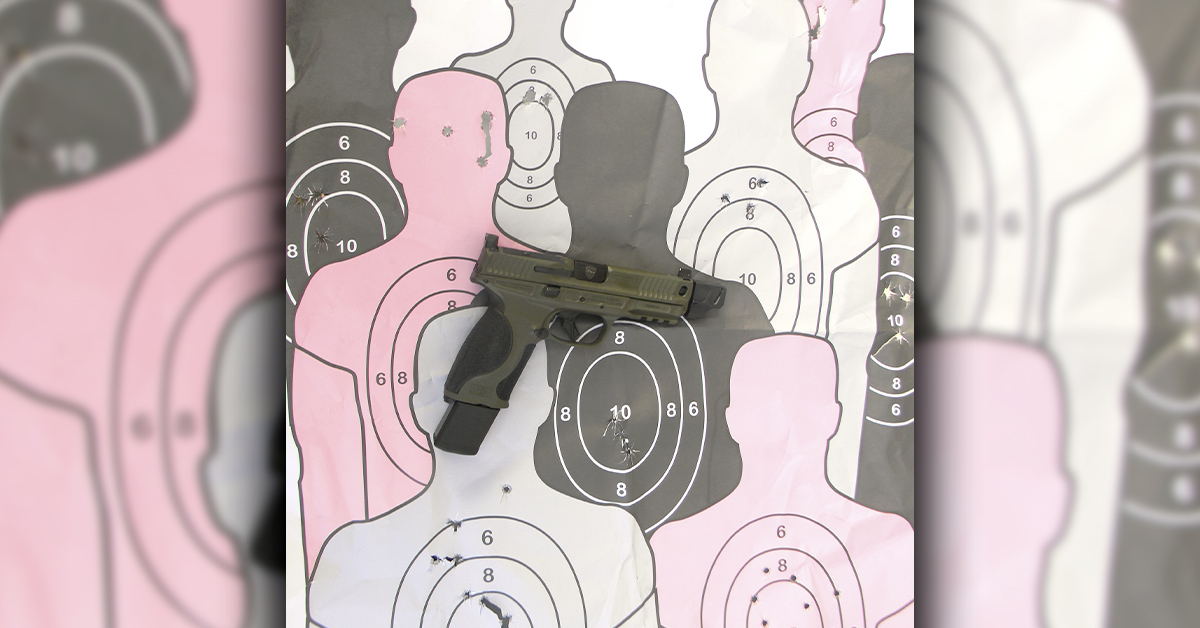
Comparing it to the 40-oz. Shadow 2 9mm, results were comparable in speed shooting and very close in absolute accuracy. But the Spec is a pistol you may carry comfortably for long periods. The pistol proved slightly more accurate than the SIG P210 I had on hand for comparison. The Dan Wesson Valkyrie is more accurate in slow fire but not by a huge margin.
The value of the compensator is best understood using heavier loads. The Black Hills 124-grain +P is a healthy load, breaking over 1200 fps in service grade 9mm handguns. It isn’t a wrist breaker, but it has more recoil than a standard velocity loading. I fired a magazine in rapid fire and was surprised at the results. The 9mm isn’t a hard kicker but you can feel the difference in loads in most pistols. The Spec 9mm ran as nicely with this load as with standard pressure loads.
Next, I fired several magazines of Sellier & Bellot FMJ with good results, and a magazine of Blazer 9mm. I was running out of ammunition as I grooved into the pistol and began to appreciate just how good a shooter it really is. I also ran several Buffalo Bore 147-grain JHP loads in the Spec 9mm. I clocked the loads over a RCBS chronograph, and the velocities are actual velocity at ten feet. The 147-grain Outdoorsman is a hard-cast solid bullet designed for maximum penetration. Velocity is 1120 fps. The 147-grain +P+ JHP breaks 1160 fps. With penetration to 21 inches in water and expansion to .73 inches, this heavy load offers excellent performance for certain situations.
Each was comfortable to fire. The compensator seemed to operate more efficiently with these powerful loads. I felt as if I were firing a standard pressure loading. Results were very good to surprising.
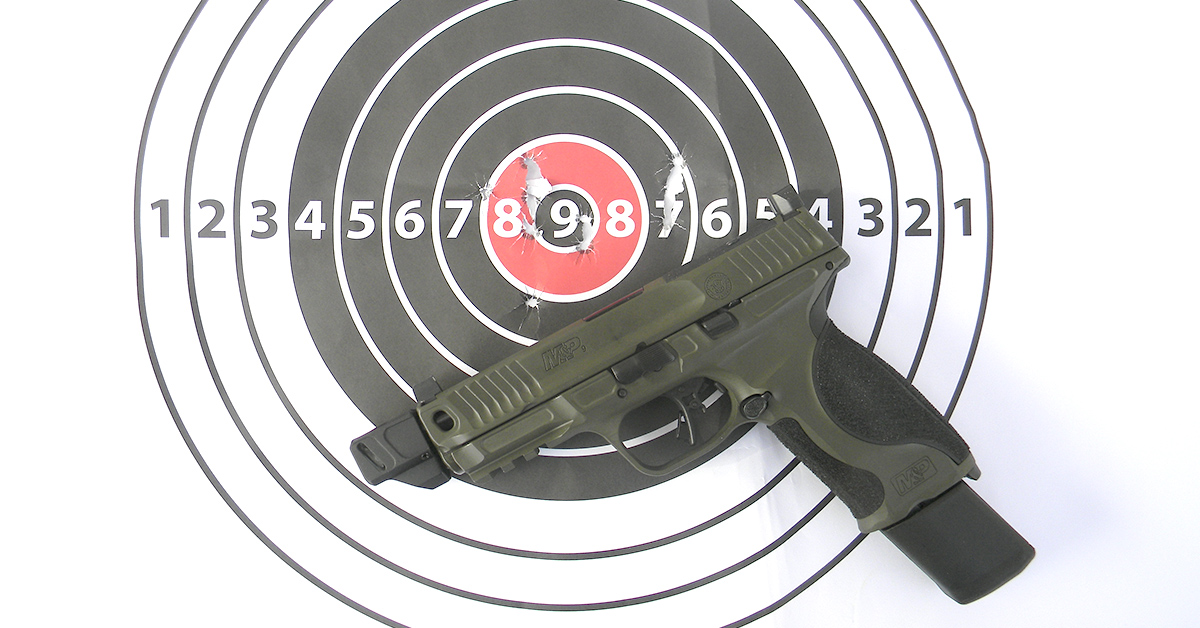
The final step was testing accuracy. Absolute accuracy firing from a solid rest using the MTM Case-Gard K-Zone shooting rest was good. I tested nine loads. The pistol has plenty of practical accuracy.
Load / 5-shot group 25 yards
- Federal 124-grain HST / 2.0 in.
- Speer 124-grain Gold Dot / 1.5 in.
- Federal 147-grain HST/1.5 in.
- Hornady 115-grain Hunter / 1.65 in.
- Fiocchi 124-grain Defense / 1.8 in.
- Buffalo Bore 147-grain +P+ / 1.75 in.
- SIG Sauer Elite 124-grain/ 2.25 in.
- Winchester 124-grain Defender +P / 2.15 in.
- PMC 124-grain FMJ / 2.0 in
No huge deviation in results and overall, very good accuracy. This is a useful handgun with much to recommend.
What I Like
Versatility! The Spec 9mm is a great shooter that challenges its owner to be all they can be. If you are invaded by a takeover gang on their three-day pass from hell, you are well prepared to repel a threat. The pistol isn’t too large for concealed carry. The sights and trigger are superb.
What I Don’t Like
The grips are raspy, and I am not exactly a snowflake. Yet, no abraded palm or blood after the test.
What I Would Change
Maybe I would like a manual safety.
Compare To
The only guns that outshoot this pistol are models like the SIG X types and the large and heavy CZ Shadow 2. The vaunted SIG P210 isn’t quite as accurate. A long slide GLOCK isn’t in the running. With a compensator and trigger, you may get a GLOCK close. You will spend a great deal of money on a GLOCK or similar gun trying to match this handgun.
Smith & Wesson Performance Center M&P9 Metal M2.0 Spec Specifications
- Caliber: 9mm
- Size: full
- Action: striker-fired
- Barrel Length: 4.8 in.
- Barrel Material: stainless steel
- Barrel Threaded: yes
- Frame: aluminum
- Grip: aluminum
- Safety: no thumb safety
- Optic-Ready: yes
- Capacity: 23
- Magazines: 4
- Sights: front/rear tritium
- Color/Finish: OD green
- Width: 1.3 in.
- Length: 8.5 in.
- Height: 5.5 in.
- Weight: 30 oz.
- MSRP: $999.00

